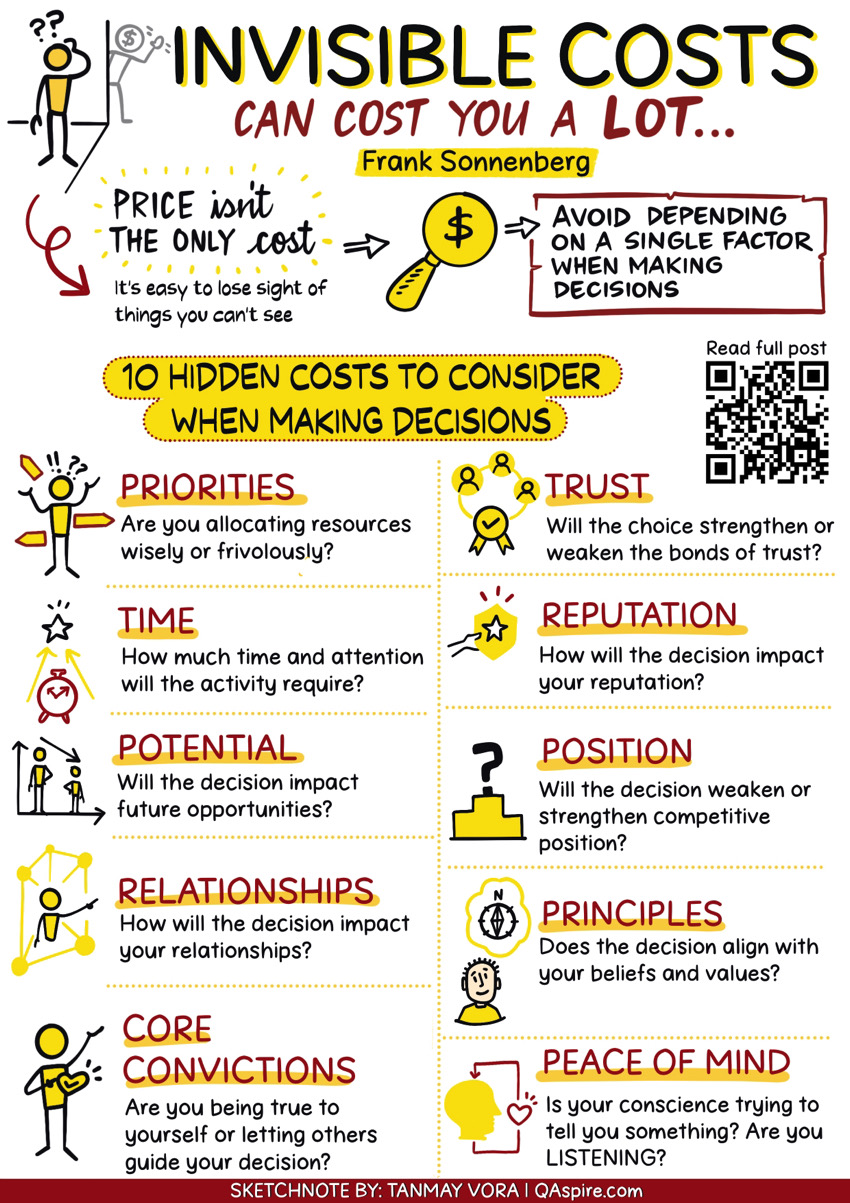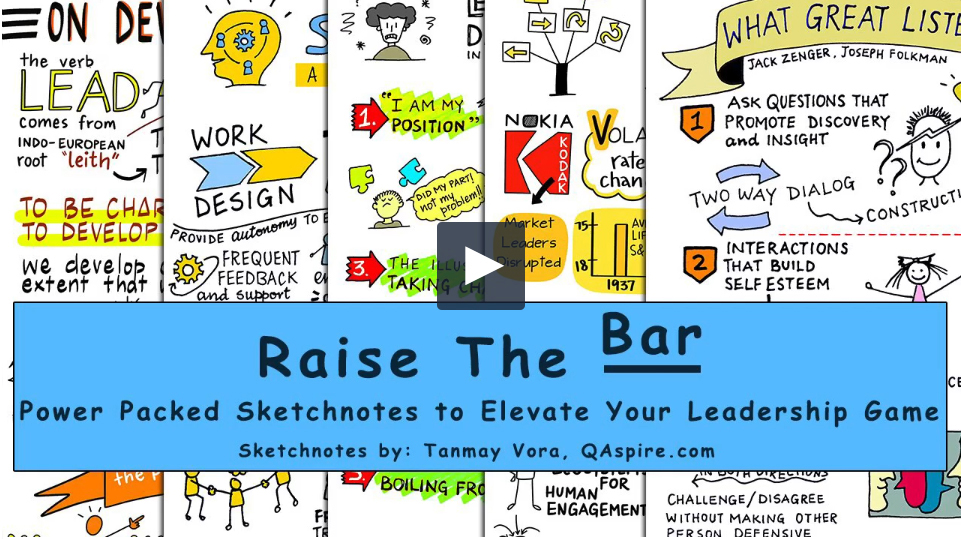Invisible Costs to Consider in Decision Making
In a world that reveres speed, it is easy to fall into trap of quick decision making on things that matter, without considering the invisible costs of a decision. The post offers a useful checklist of things to consider.
Tanmay Vora
We often take decisions based on what matters the most to us “at that point in time”. Revenues going down? Take up that dreaded project which you wouldn’t take otherwise. A friend wants you to speak for free at an event? Say yes, because he is a friend afterall. A product being offered at really low cost? Buy it, it’s a great bargain.
You only realize later that the project you took up ate all your team’s time and resources to the point of making losses and losing reputation. That free speaking gig meant hours spent preparing for it, away from your family and friends. That product that looked like great bargain ended up being a crappy product that felt like a waste.
Every “Yes” contains a “No” to something else, and vice versa. (Courtesy: Nicholas Bate)
This happens all the time, in personal as well as business context. That’s because we take these decisions very lightly without doing critical thinking. But then, there are invisible costs that we can only feel, but cannot tangibly count. How would you measure loss of reputation because of that failed project, or lost productivity addressing something that could have been avoided completely?
Critical decisions are not binary but multifaceted. When stakes are high (personally, emotionally, and professionally), it helps to carefully consider different facets of it. This is not about discouraging quick decisions, but encouraging thoughtful decisions when it matters. I am a big fan of taking quick decisions, acting and adapting/learning our way into doing things right when stakes are low. That’s how we learn – through small experiments, reflection and putting that learning into our next step.
In this context, I read this wonderful post from Frank Sonnenberg offering a useful checklist to consider when making decisions. He says,
When making decisions, most people view cost as an important consideration. While price is undoubtedly crucial, what about invisible costs that also come into play? For example, what are the long-term effects of your decision? Does your choice align with your beliefs and values? And of course, have you considered how your decision impacts your relationships? Simply put, hidden costs may be invisible to the naked eye, but they’re very visible to your wallet. Overlooking these factors can cost you a bundle.
Here is a #sketchnote summary of how Invisible costs can cost you a lot.

Related Reading at QAspire.com
- Dealing With Analysis Paralysis Versus Death by Instinct
- The ‘Invisibles’ in Business Performance
- Five-Why Technique for Problem Solving and Decision Making
- Invisible Cost of “Toxic” Leadership
Updated: Visual Leadership Pack HD Sketchnotes
If you liked the sketchnote summary above, check out the Visual Leadership Pack of HD Sketchnotes – a compilation of high-resolution sketchnotes with 88+ powerful (and timeless) ideas to elevate your leadership and learning game.
